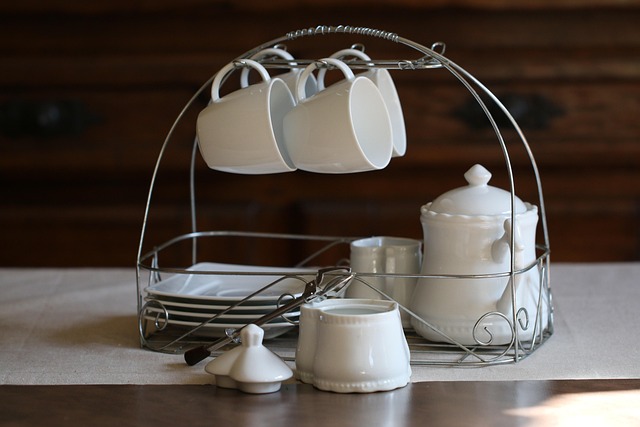Structured cabling for Wireless Access Points (WAPs) is a crucial practice for optimizing network performance and management. Ceiling-mounted systems enhance signal strength and reduce interference in large spaces, requiring careful planning and high-quality components. Wall-mounted WAPs benefit from strategic cabling that minimizes cable length and uses advanced cabling standards like Cat6a. Patch panels simplify management and future expansion. Integrating structured cabling during space redesign ensures optimal network performance and aesthetic appeal with discreet mounting options.
In today’s digitally connected world, optimal placement of Wireless Access Points (WAPs) is paramount for seamless network coverage. This article delves into the intricacies of structured cabling for WAPs, a foundational concept for achieving peak performance. We explore two primary mounting methods: ceiling-mounted and wall-mounted cabling, highlighting benefits, best practices, design strategies, and esthetic integration. Understanding these aspects ensures not only robust wireless connectivity but also harmonious space planning.
Understanding Structured Cabling for WAPs: A Foundation for Optimal Placement
Structured cabling for WAPs (Wireless Access Points) forms the foundation for optimal placement within any network infrastructure. It involves a meticulously designed system that organizes and categorizes cable pathways, ensuring efficient management and accessibility. This structured approach facilitates seamless integration of WAPs into existing networks, allowing for easy upgrades and expansions while maintaining a neat, organized environment.
Understanding structured cabling is key to maximizing the benefits of WAP placement. By implementing this method, IT professionals can achieve streamlined connectivity, reduce interference, and enhance overall network performance. It provides a scalable solution that adapts to growing network demands, making it an indispensable practice for organizations aiming for reliable and high-performing wireless networking systems.
Ceiling-mounted WAP Cabling: Benefits and Best Practices
Ceiling-mounted WAP cabling offers numerous advantages in optimizing wireless network coverage and performance. By strategically placing access points (WAPs) on the ceiling, networks can achieve better signal strength and reduced interference. This approach is particularly beneficial for large spaces like offices or warehouses, ensuring consistent connectivity throughout.
When implementing structured cabling for WAPs in this manner, best practices dictate careful planning and execution. Ensure proper cable management to avoid clutter and maintain aesthetics. Use high-quality cables and connectors designed for wireless networking to guarantee signal integrity. Additionally, consider the ceiling’s structural integrity and load capacity to prevent any potential hazards.
Wall-mounted WAP Cabling: Design Considerations and Layout Strategies
Wall-mounted Wireless Access Points (WAPs) offer a sleek and efficient way to expand network coverage, but proper cabling is essential for optimal performance and future-proofing. When designing the structured cabling for WAPs in wall-mounted setups, consider the layout carefully. Each WAP should be connected to a central networking device via high-quality cables, ensuring minimal signal loss. The routing of these cables behind walls or in overhead voids must be strategic, avoiding sharp bends or excessive tension that could damage the cable or interrupt signal quality.
A well-planned layout involves grouping similar devices together and minimizing cable length to reduce interference and latency. Using a combination of structured cabling types, such as Cat6a or higher, allows for faster data transfer rates and supports advanced network features. Additionally, incorporating patch panels at strategic locations facilitates easier management, troubleshooting, and future expansion by providing organized entry points for cables from various WAPs and networking devices.
Balancing Esthetics and Functionality: Integrating WAP Cabling into Your Space
When designing or reconfiguring a space, balancing esthetics and functionality is key. In the context of Wireless Access Points (WAPs), structured cabling plays a crucial role in achieving both. Strategically integrating WAP cabling into your ceiling or wall not only ensures optimal signal strength and network performance but also contributes to a seamless, aesthetically pleasing environment.
By carefully planning the placement of cables, you can maintain a clean, clutter-free look while providing the necessary infrastructure for robust wireless connectivity. Modern structured cabling solutions offer discreet options for mounting and organizing cables, allowing them to blend seamlessly into your space. This not only enhances the overall visual appeal but also simplifies future maintenance and upgrades.
When it comes to deploying Wireless Access Points (WAPs), proper cabling is essential. Structured cabling for WAPs, whether ceiling or wall-mounted, offers both aesthetic and functional benefits. By understanding the best practices for each mounting type and balancing aesthetics with functionality, you can create a seamless network infrastructure that supports modern connectivity while enhancing your space’s design. Opting for efficient placement ensures optimal performance, coverage, and user experience, ultimately transforming your physical environment into a connected, vibrant hub.
